Geology: Forming & Fostering Paterson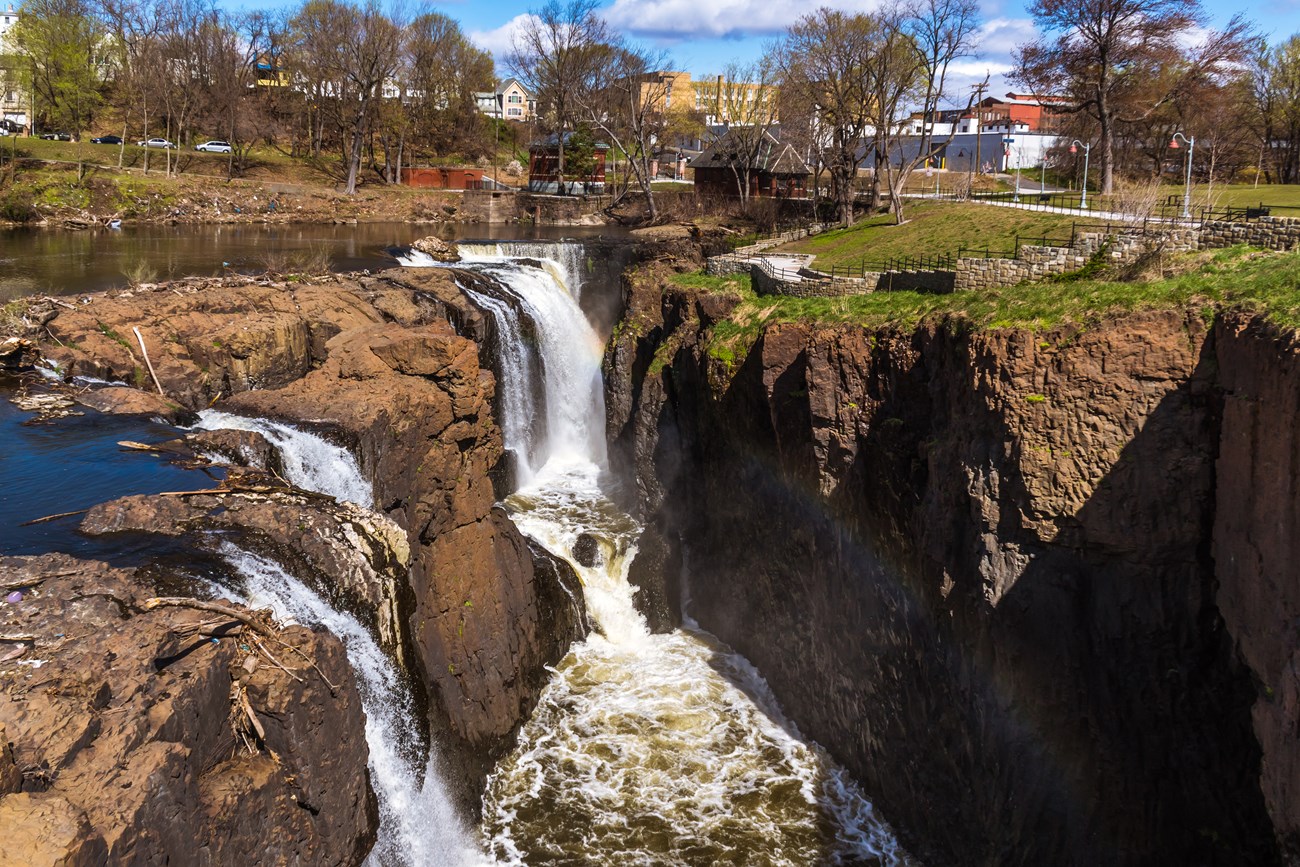
VIP Terry McKenna Geologically speaking, Paterson's past is a varied and exciting one. Lava flows, upheavals, even the break-up of the supercontinent Pangaea - these events are all part of this area's geologic pre-history. The Falls and other natural features in Paterson give us clues to parts of this story. As you walk over the Falls, through Upper Raceway Park, and around the Great Falls Historic District, you'll see some of these clues. 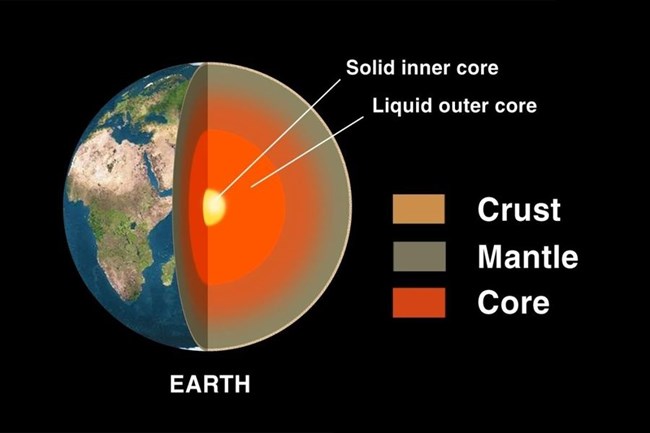
NASA A Kid's Introduction to Paterson Geology: Rocks, Water, & TimeWhat is "geology"?Geology (from the Greek words "geo" for "earth" and "logy" meaning "study of") is the science of the physical features of the Earth and other planets and characterizes the various rocks and minerals. Geology is both a practical science used by industries and a theoretical science exploring how the Earth and other planets developed since forming. It helps predict earthquakes, plan and construct buildings and infrastructure like roads, dams, and bridges, and studies the ancient history of our and other planets. Geology teaches us how and why minerals, metals, oil, and other resources form where and when they do, and how the world may change in the future. 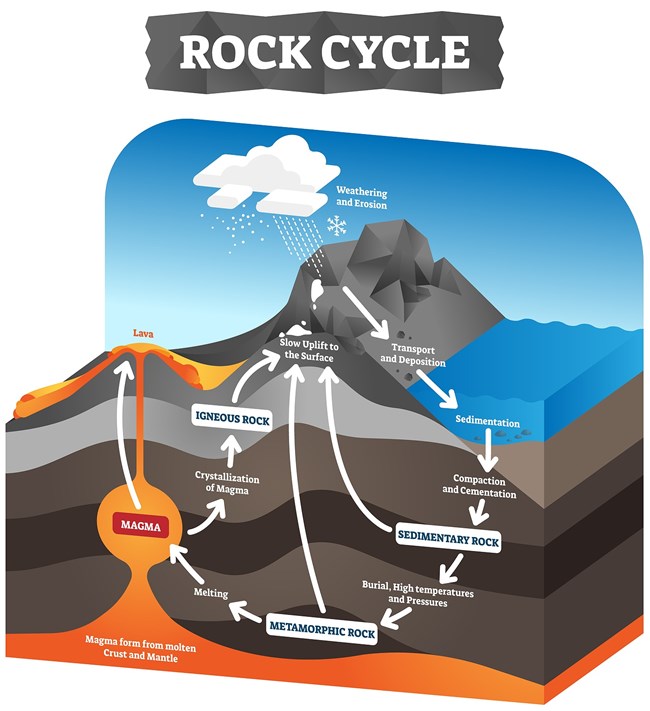
USGS While they seem solid and permanent, rocks change over time. Some melt with great heat and pressure. Others are chipped and worn away through friction in processes known as "erosion" and "weathering." We call these changes the "rock cycle." Like the water cycle, where water changes forms and location around the planet, the rock cycle helps map the ways rocks move and change into different types. Just as water can be a liquid, a solid (ice), or a gas (steam), rock can change form. Also, similar to how water evaporates into the sky, falls as rain, and flows in rivers and streams to oceans and lakes before seeping underground, rocks are pushed up from and back into the Earth's crust. There are many types of rocks, but scientists sort them into three types: "igneous," "sedimentary," and "metamorphic." Each has different properties based upon how they were formed, and each can be transformed into another. Igneous
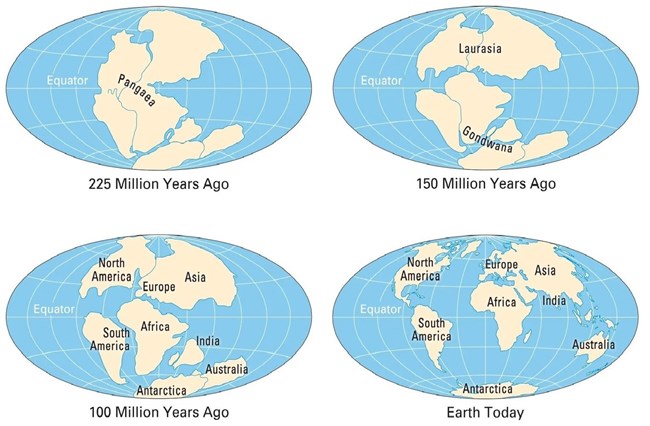
USGS Over 300 million years ago the seven modern continents were merged as one giant supercontinent known as "Pangea" (sometimes spelled "Pangaea"). This name comes from two Greek words: "Pan," meaning "all," and "Gaia/Gaea," meaning "Mother Earth." Continental Drift & Plate Tectonics The area where Paterson is today was located along a split between two massive continental plates. Continental and oceanic plates "float" on the Earth's molten outer core in a process called "plate tectonics". About 200 million years ago, Pangea began tearing apart as the North American and African plates pulled apart, causing lava flows. These hardened, forming the igneous basalt bedrock you see today at the Great Falls. 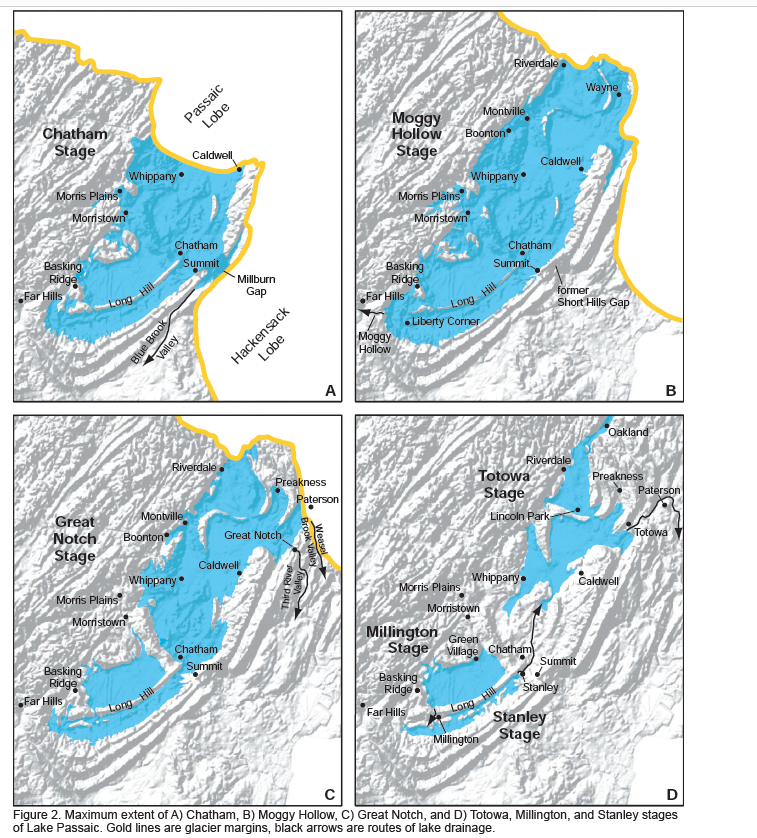
NJ DEP Millions of years after the lava cooled, glaciers covered this region during the last Ice Age. Glaciers A glacier is a large area of thick ice that remains frozen from one year to the next. Like lava, glaciers flow slowly over the land. These periods, when huge portions of the Earth were covered in ice, are called a "glaciation." The Laurentide and Cordilleran ice sheets, first formed nearly 2.6 million years ago, expanded and contracted as the global climate cooled and warmed. These ice sheets were over 10,000 feet thick in some locations (nearly two miles in height). The area around Paterson saw two major glaciers: the llinoian and Late Wisconsonian glaciations. The Illinoian glaciation formed about 150,000 years ago, while the Late Wisconsonian glaciation covered Paterson when it was at it's largest size, approximately 25,000 years ago. These glaciers carved the landscape and formed the hills and valleys that make up the Watchung Range we see in the region today. They also rerouted the ancient path of the Passaic river. As the Late Wisconsonian glaciar melted, the resulting water formed a lake hundreds of feet deep known as Glacial Lake Passaic. This ancient lake was "proglacial," meaning it was formed by melting ice blocked from draining by the glacier itself. Glacial Lake Passaic existed in Northern New Jersey up until about 14,000 years ago, when the glacier's retreat uncovered passes in the hilly landscape which allowed the prehistoric Passaic River to find a new route, draining Lake Passaic and carving a new path via the chasm of the Great Falls. The watershed of the Passiac River and its associated wetlands are the ancient remnants of this lake, forming the basis of the Great Swamp National Wildlife Refuge. 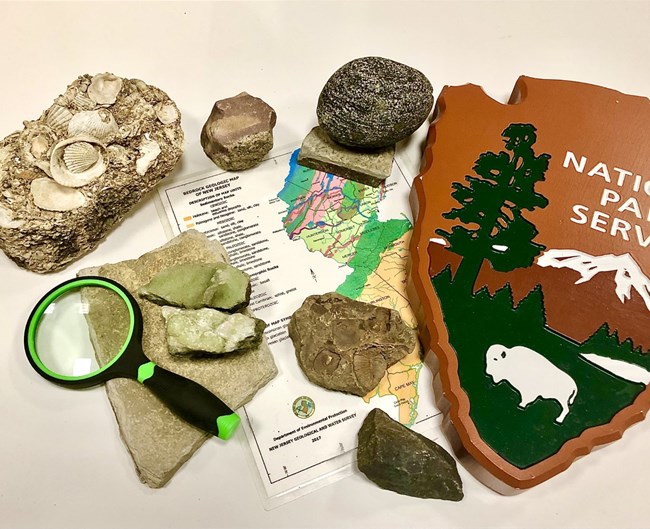
NPS Learn more:Check out these videos to learn more about the geology of Paterson and the Great Falls:Geology Part 1 - How the Rocks Got to the Falls Geology Part 2 - How the Passaic River Came to the Falls Explore these links to learn more about geoscience and glaciers: Geology in National Parks Geoscience Concepts Glaciers Bring these concepts to the classroom with these teaching resource links: Geoscience Teaching Resources Glacier Teaching Resources Visit the Paterson Museum to explore their mineral exhibit: The Paterson Museum |
Last updated: January 12, 2024
